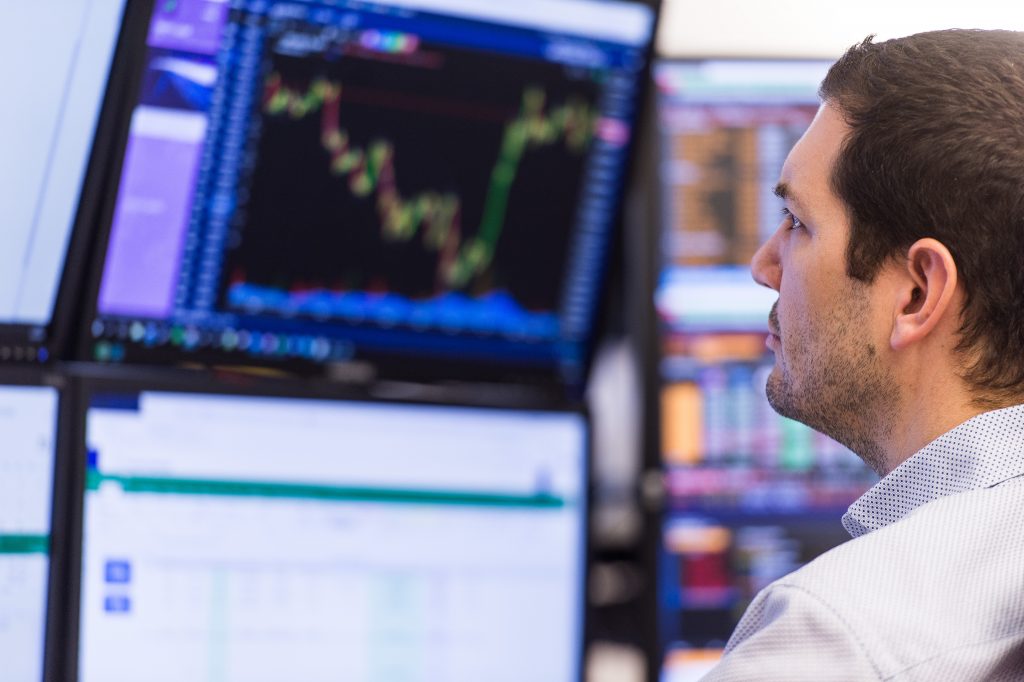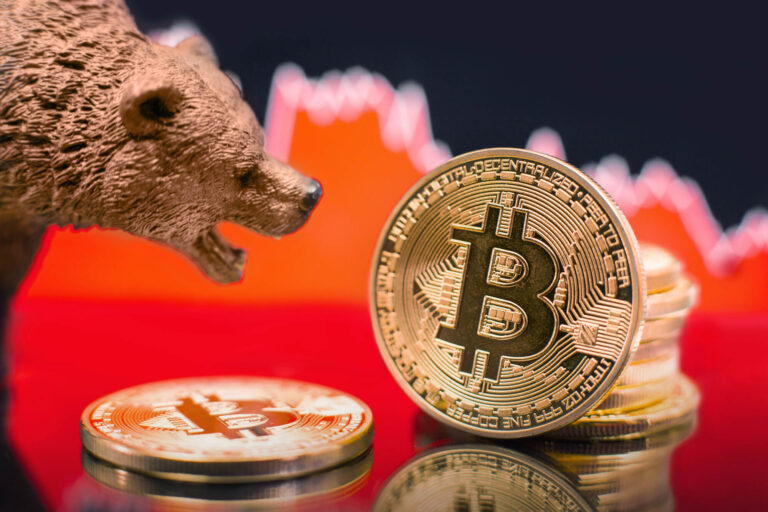Good Morning!
For cryptocurrencies, 2021 was an exciting year. Alternative Layer 1s held the spotlight, and there was an interest shift from DeFi to NFTs and the Metaverse. Consequently, from the beginning of 2021 until the start of 2022, altcoin dominance increased by more than 30%.
Today, we would like to present some altcoins that are in focus now at the top of the new year. Please note that our descriptions of cryptocurrencies are often based (at least in part) on the project’s marketing material. We acknowledge that marketing plays an important part in driving crypto prices, but we also believe that prices should always be considered together with more fundamental value drivers, e.g. the underlying technology, security, extent of decentralisation, governance as well as tokenomics.
Fantom (FTM)
Fantom is a Layer 1 smart contract platform. Its native coin, FTM, is the 26th largest cryptocurrency by market cap. FTM saw a drastic price increase towards the end of 2021 and into 2022. From December 21st to January 5th, the price of the coin more than doubled. Its consensus mechanism has caught the attention of many. Its proof-of-stake framework validates transactions using an efficient, scalable, and low-cost method. Furthermore, the main environment upon which decentralised applications can deploy on Fantom is Ethereum compatible. This allows for any decentralised app built on the Ethereum network to deploy on Fantom, relieving the application’s users of high gas fees and slow transactions. Some notable projects that have recently launched on Fantom are Abracadabra.money, Yearn.finance, Curve, and Sushi.
On August 30, 2021, Fantom announced a 370m FTM incentive programme for any protocol that launches on the network and maintains certain levels of Total Value Locked (TVL). This was likely the driver that catapulted the network’s TVL from $691m to $6.34b. Among the 10 largest TVL Chains, Fantom boasts the lowest market cap/TVL ratio of 1.13. An overview of the 112 different projects on the network can be found here.
Curve (CRV)
Curve is the leading Automated Market Maker for trading stablecoins. Reasons for the platform’s increase in popularity is the increased prevalence of stablecoins, low fees charged on stablecoin swaps, and low slippage offered on trades. Until recently, Curve focused solely on pegged asset trading pairs. However, in June of 2021, the expansion of Curve into non-pegged assets, dubbed as “Curve V2”, began. While it may not be obvious when looking at their website, Curve currently has the highest TVL among all decentralised applications. According to daily volume, the most traded assets on Curve are USD stablecoins (USDC, USDT, DAI, MIM, UST), wrapped BTC, and ETH.
The CRV token has received a great deal of attention due to the value it brings to its holders. Curve charges users 0.04% fees on trades. Half of this fee goes to users who provide liquidity, and the other half is distributed across users who stake their CRV tokens. Additionally, CRV stakers are eligible to vote on protocol proposals and earn a boost of up to 2.5x on the liquidity they provide. At the time of writing, 50.8% of circulating CRV supply is locked for an average lock time of 3.63 years. CRV has a total supply of 3.03b tokens; however, only 1.6b have been minted. 62% of the total supply will be distributed to community liquidity providers, showing their focus on empowering their token holders.
Convex Finance (CVX)
Productive assets have become a big topic, and Convex fully capitalises on this phenomenon. Convex Finance is a protocol that simplifies the CRV boosting experience to maximise yields. While the CVX token has increased more than 1,500% in the last six months, many still see upside potential due to how the project is shaping DeFi, by giving token holders more voting power and yield from protocols. Convex operates with Curve and is strategically designed to accumulate CRV tokens. Meanwhile, Convex has become the largest single holder of the CRV token, and therefore has the majority voting power of the protocol it is built on top of.
CRV holders are able to stake the token on Convex to earn trading fees from Curve, a share of 10% of the Convex liquidity providers boosted CRV fees, and CVX tokens. You might be asking yourself how Convex is able to boost these rewards? Convex is able to stake its large CRV holdings and use its majority voting power to vote on what the CRV inflation is and which pools receive the highest amount of CRV rewards. New CVX tokens are minted pro-rata for each CRV claimed on Convex by stakers and liquidity providers. Once CVX tokens are earned, or bought, they can be locked on the Convex platform, to receive a portion of the platform’s revenue and receive voting power on proposals.
Yearn.finance (YFI)
DeFi projects were under the radar in 2021. However, another productive asset project made a comeback towards the end of the year. Yearn Finance is one of the leading yield aggregators in DeFi. Yearn Vaults are like savings accounts for your cryptocurrencies; they accept your deposits and find the strategy with the highest yield available. Their Iron Bank provides a lending service to protocols and users.
The price of YFI increased just over 100% from December 12th to January 3rd. There are a few reasons for this. The protocol did a token buyback, often seen in traditional finance markets when a company believes its shares to be undervalued. Since the proposal was approved on November 12th, 0.77% of YFI’s token supply was repurchased by the DAO. Similar to Curve, Yearn is introducing a staking programme where staked users will receive YFI and voting opportunities.
Yearn.finance has $5.8b in total value locked, and a fully diluted market cap of $1.18b, producing an impressive market cap/TVL ratio. Additionally, it earns one of the highest fees per TVL. The annualised total revenue, which is made up of fees generated for token holders and supply-side participants (miners/validators, liquidity providers, lenders, etc.) was $222.42m, giving them a price-to-sales ratio of 5.23x, earning them a spot in the Top 10 price-to-sales crypto projects.
Layer 2 Rollups
In 2021, the Ethereum network was often congested, leading to expensive transactions for network users. Subsequently, Ethereum’s Layer 2 rollup solutions became a hot topic among the Ethereum community, and is on top of everyone’s minds in 2022. According to L2BEAT, the TVL of all Layer 2s is $5.54b. Rollups are solutions that perform transactions outside of the main Ethereum chain, but post transaction data back on the main chain. This process aims to enable fast transaction throughput, open participation, and reduces fees for users.
There are two types of rollups: optimistic rollups and zero-knowledge rollups. Optimistic rollups assume transactions are valid by default and notarise the transaction to the main chain. They only run computations in the event that anyone notices a fraudulent transaction. Zero-knowledge rollups run computations off the Layer 1 chain, and then submit batches of transactions and the proof of their validity back to the main chain. Check out Vitalik Butherin’s Guide and Ethereum’s introduction, which explain rollup solutions in detail. While there are multiple projects being onboarded to Layer 2 solutions, these two protocols have stood out to exclusively being launched on them.
dYdX (DYDX)
dYdX is a decentralised perpetual contracts exchange. The protocol uses zero-knowledge rollups, built by StarkWare, to settle trades. They are therefore able to process much larger amount of trades and lower minimum order sizes. Users benefit from low fees, no gas costs, instantly executed trades and fast withdrawals, something not common among most Decentralised and Centralised Exchanges. DYDX is the governance token that allows holders to help govern the protocol, but also receive trading discounts when trading.
Immutable X (IMX)
OpenSea smart contracts were the top gas consuming smart contracts over the last 30 days. This is where Immutable X, the first Layer 2 NFT marketplace, comes in. Using zero-knowledge rollups developed by StarkWare, users are able to trade and mint NFTs on Immutable X without paying gas fees. The IMX token is used for voting on governance proposals, but is also needed to pay for 20% of each transaction fee.
Happy Trading!
All intellectual property, proprietary and other rights and interests in this publication and the subject matter hereof are owned by Crypto Broker AG including, without limitation, all registered design, copyright, trademark and service mark rights.
Disclaimer
This publication provided by Crypto Broker AG, a corporate entity registered under Swiss law, is published for information purposes only. This publication shall not constitute any investment advice respectively does not constitute an offer, solicitation or recommendation to acquire or dispose of any investment or to engage in any other transaction. This publication is not intended for solicitation purposes but only for use as general information. All descriptions, examples and calculations contained in this publication are for illustrative purposes only. While reasonable care has been taken in the preparation of this publication to provide details that are accurate and not misleading at the time of publication, Crypto Broker AG (a) does not make any representations or warranties regarding the information contained herein, whether express or implied, including without limitation any implied warranty of merchantability or fitness for a particular purpose or any warranty with respect to the accuracy, correctness, quality, completeness or timeliness of such information, and (b) shall not be responsible or liable for any third party’s use of any information contained herein under any circumstances, including, without limitation, in connection with actual trading or otherwise or for any errors or omissions contained in this publication.
Risk disclosure
Investments in virtual currencies are high-risk investments with the risk of total loss of the investment and you should not invest in virtual currencies unless you understand and can bear the risks involved with such investments. No information provided in this publication shall constitute investment advice. Crypto Broker AG excludes its liability for any losses arising from the use of, or reliance on, information provided in this publication.








